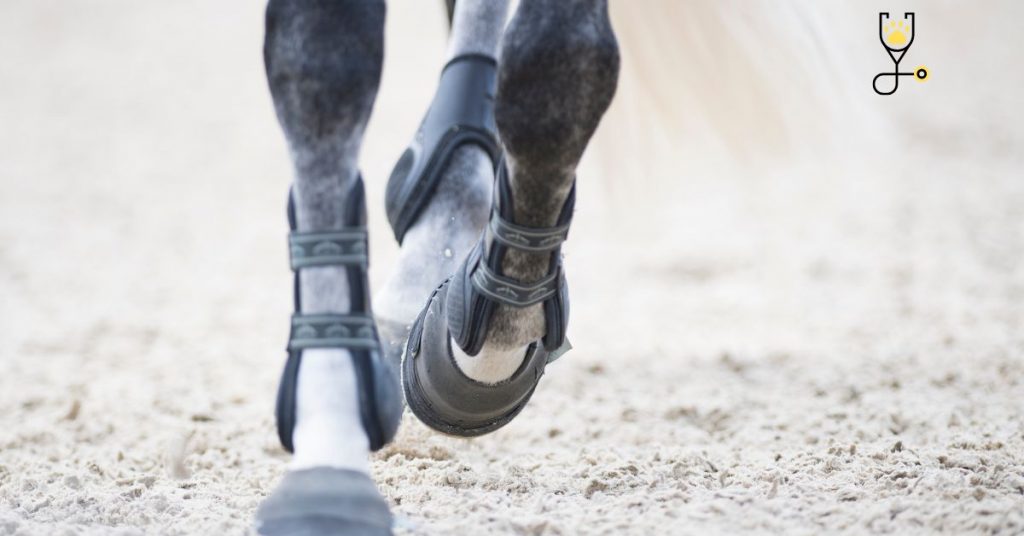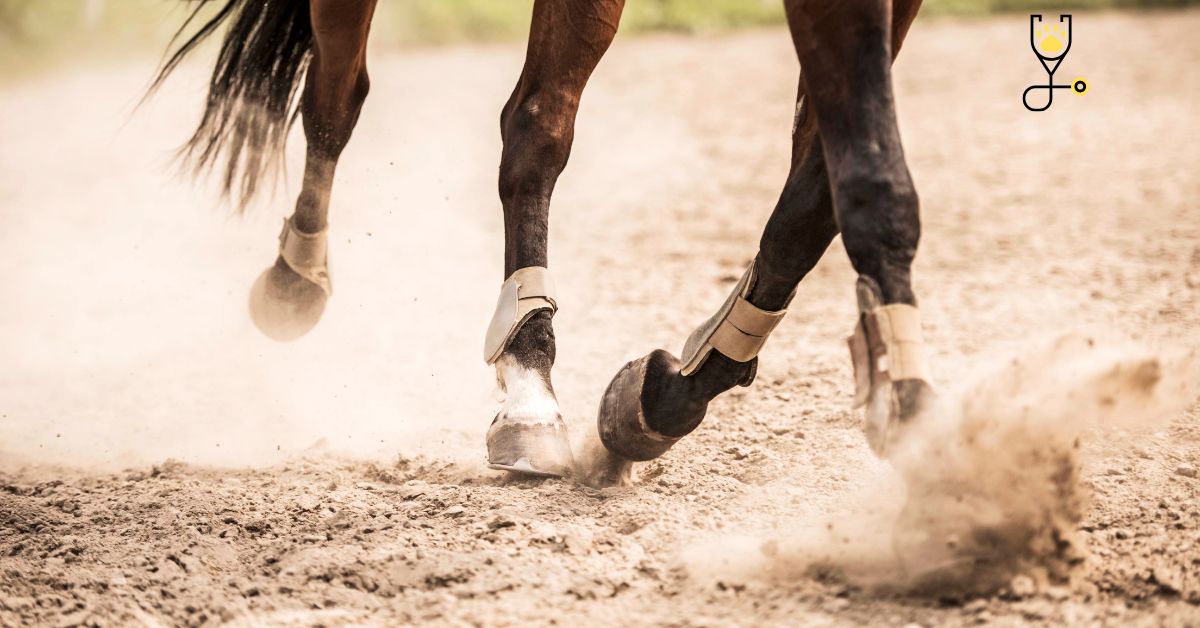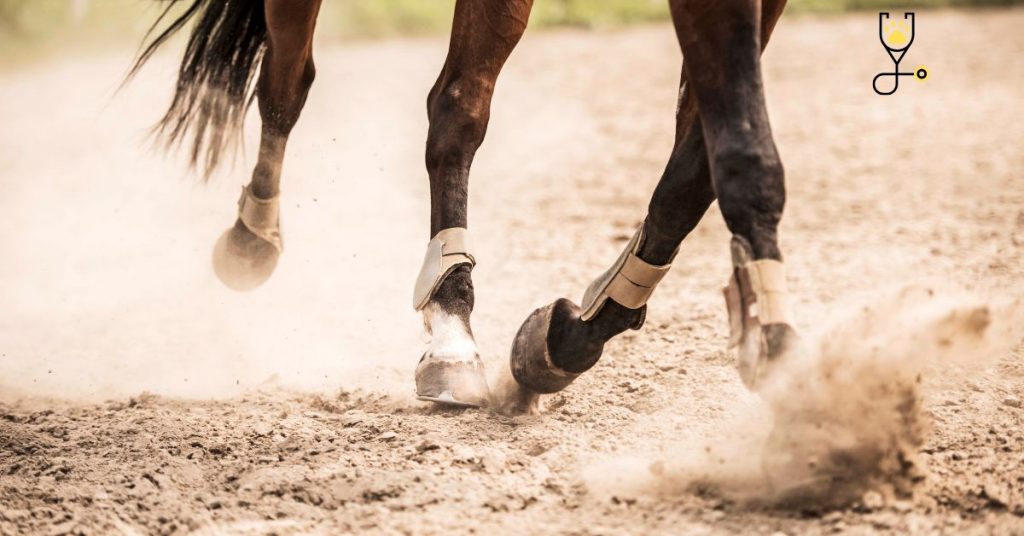Did you know that a horse’s legs are one of the most important features to keep in good condition? Just like with people, if a horse’s legs aren’t in good shape, they can’t perform as well. In this blog post, we’ll discuss the importance of keeping your horse’s legs healthy and how to do it. We’ll also cover some common issues that can affect horses’ legs and what you can do to prevent them. Keep reading to learn more!
What are the most important things to keep in mind when caring for your horse’s legs?
The most important thing to remember when caring for your horse’s legs is to keep them clean and dry. This means brushing them regularly and picking out any dirt or debris that could cause irritation. You should also check your horse’s legs for any signs of swelling, heat, or redness, which could indicate an injury. If you notice anything unusual, consult your veterinarian right away. Another important consideration is exercise. Just like people, horses need to move their bodies to stay healthy. Exercise helps strengthen their muscles and bones, and it also helps increase circulation to their legs. Make sure you give your horse plenty of opportunities to run and play, whether it’s in the pasture or in the arena.

Common leg problems in horses
1. Arthritis
Arthritis is a common issue in horses, especially as they age. It occurs when the cartilage in the joints breaks down, causing pain and inflammation. You may notice your horse is reluctant to move or is having difficulty bearing weight on one or both legs. If you suspect your horse has arthritis, consult your veterinarian for a diagnosis and treatment plan.
2. Tendonitis
Tendonitis is an inflammation of the tendons, which are the tissues that connect muscle to bone. It’s often caused by overuse or repetitive motions, such as from working in an arena. You may notice your horse is lame or has a stiff gait. If you suspect tendonitis, have your horse examined by a veterinarian. They will likely recommend rest and ice therapy to reduce swelling.
3. navicular disease
Navicular disease is a progressive condition that affects the navicular bone, which is located in the horse’s hoof. It’s often caused by improper shoeing or lack of hoof care. You may notice your horse is lame or has a short, choppy stride. If you suspect navicular disease, consult your veterinarian for a diagnosis and treatment plan.
4. laminitis
Laminitis is an inflammation of the sensitive tissue that connects the hoof wall to the bones of the foot. It can be caused by many things, including overfeeding, infection, and injury. You may notice your horse is reluctant to move or has a stiff gait. If you suspect laminitis, consult your veterinarian for a diagnosis and treatment plan.

5. joint disease
Joint disease is a general term used to describe any condition that affects the joints. It can be caused by many things, including arthritis, tendonitis, and navicular disease. You may notice your horse is lame or has a stiff gait. If you suspect joint disease, consult your veterinarian for a diagnosis and treatment plan.
6. muscle injury
Muscle injuries are usually caused by overuse or repetitive motions. You may notice your horse is lame or has a stiff gait. If you suspect a muscle injury, have your horse examined by a veterinarian. They will likely recommend rest and ice therapy to reduce swelling.
How can you prevent leg problems in horses?
The best way to prevent leg problems in horses is to keep their legs clean and dry. This means brushing them regularly and picking out any dirt or debris that could cause irritation. You should also check your horse’s legs for any signs of swelling, heat, or redness, which could indicate an injury. If you notice anything unusual, consult your veterinarian right away. Another important consideration is exercise. Just like people, horses need to move their bodies to stay healthy. Exercise helps strengthen their muscles and bones, and it also helps increase circulation to their legs. Make sure you give your horse plenty of opportunities to run and play, whether it’s in the pasture or in the arena.

Prognosis For Leg Problems In Horses
The prognosis for leg problems in horses depends on the underlying cause. Many conditions, such as arthritis and navicular disease, are progressive and cannot be cured. However, with proper treatment, your horse can still enjoy a good quality of life. Other conditions, such as tendonitis and laminitis, can be resolved with rest and proper care. If you have any concerns about your horse’s leg health, consult your veterinarian for more information.
Conclusion
There are many different leg problems that can affect horses. Some, such as arthritis and navicular disease, are progressive and cannot be cured. However, with proper treatment, your horse can still enjoy a good quality of life. Other conditions, such as tendonitis and laminitis, can be resolved with rest and proper care. If you have any concerns about your horse’s leg health, consult your veterinarian for more information.
Frequently Asked Questions
1. What are the most common leg problems in horses?
The most common leg problems in horses are tendonitis, navicular disease, laminitis, joint disease, and muscle injuries.
2. What causes leg problems in horses?
There are many different causes of leg problems in horses, including overuse, injury, poor hoof care, and arthritis.
3. How can you prevent leg problems in horses?
The best way to prevent leg problems in horses is to keep their legs clean and dry. This means brushing them regularly and picking out any dirt or debris that could cause irritation. You should also check your horse’s legs for any signs of swelling, heat, or redness, which could indicate an injury. If you notice anything unusual, consult your veterinarian right away. Another important consideration is exercise. Just like people, horses need to move their bodies to stay healthy. Exercise helps strengthen their muscles and bones, and it also helps increase circulation to their legs. Make sure you give your horse plenty of opportunities to run and play, whether it’s in the pasture or in the arena.
4. What is the prognosis for leg problems in horses?
The prognosis for leg problems in horses depends on the underlying cause. Many conditions, such as arthritis and navicular disease, are progressive and cannot be cured. However, with proper treatment, your horse can still enjoy a good quality of life. Other conditions, such as tendonitis and laminitis, can be resolved with rest and proper care. If you have any concerns about your horse’s leg health, consult your veterinarian for more information.
5. What are some treatment options for leg problems in horses?
Treatment options for leg problems in horses depend on the underlying cause. Many conditions, such as arthritis and navicular disease, cannot be cured. However, there are treatments that can help relieve pain and improve quality of life. Other conditions, such as tendonitis and laminitis, can be resolved with rest and proper care. If you have any concerns about your horse’s leg health, consult your veterinarian for more information.





